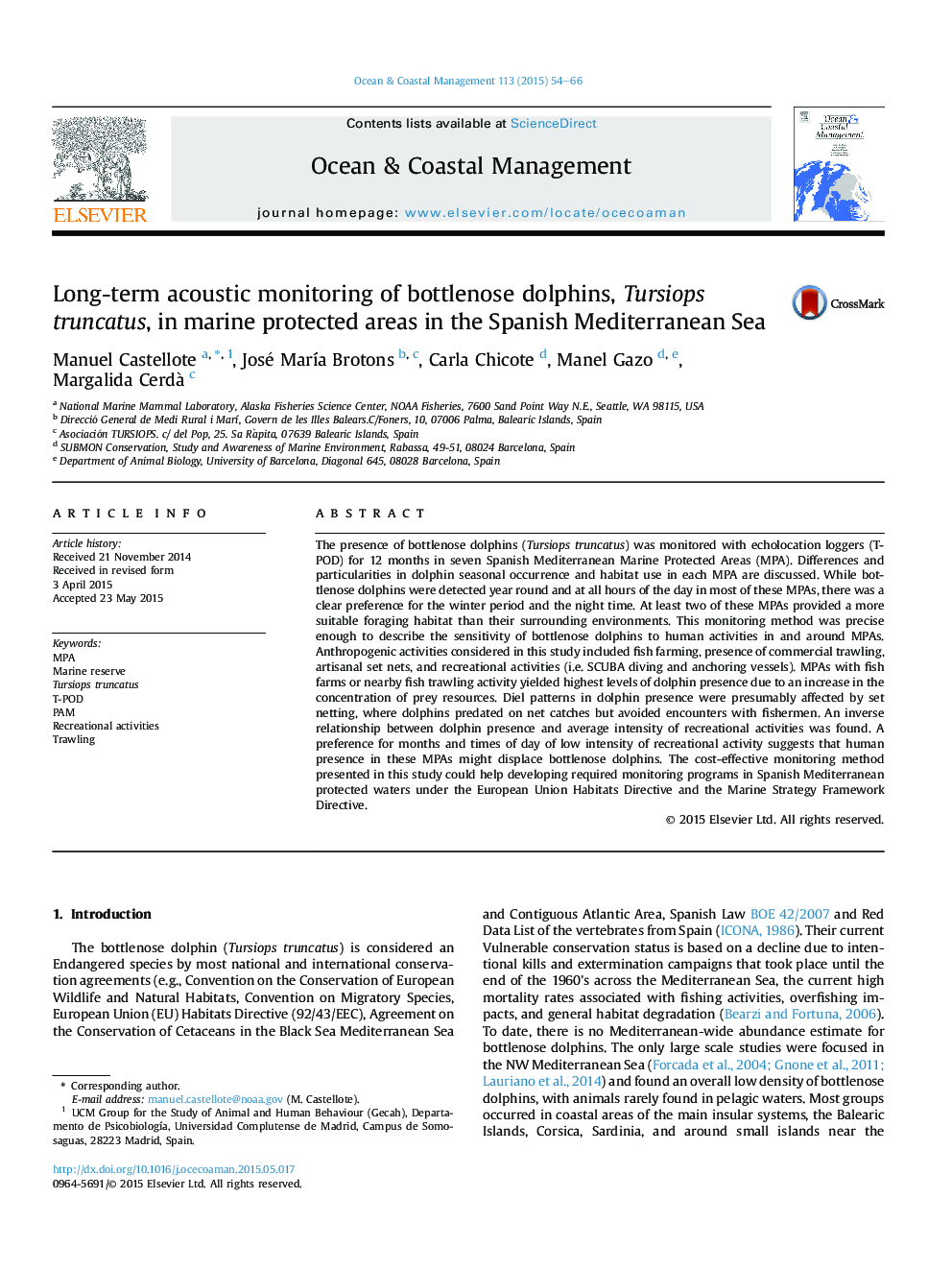| کد مقاله | کد نشریه | سال انتشار | مقاله انگلیسی | نسخه تمام متن |
|---|---|---|---|---|
| 1723464 | 1520515 | 2015 | 13 صفحه PDF | دانلود رایگان |

• Bottlenose dolphin year-round acoustic monitoring was successful in 7 MPAs.
• Differences and particularities in marine protected habitat use are described.
• Dolphin sensitivity to human activities in and around MPAs is highlighted.
• Long-term negative impacts by recreational activities in MPAs are suggested.
• Long-term acoustic monitoring plans for cetaceans in MPAs are urged.
The presence of bottlenose dolphins (Tursiops truncatus) was monitored with echolocation loggers (T-POD) for 12 months in seven Spanish Mediterranean Marine Protected Areas (MPA). Differences and particularities in dolphin seasonal occurrence and habitat use in each MPA are discussed. While bottlenose dolphins were detected year round and at all hours of the day in most of these MPAs, there was a clear preference for the winter period and the night time. At least two of these MPAs provided a more suitable foraging habitat than their surrounding environments. This monitoring method was precise enough to describe the sensitivity of bottlenose dolphins to human activities in and around MPAs. Anthropogenic activities considered in this study included fish farming, presence of commercial trawling, artisanal set nets, and recreational activities (i.e. SCUBA diving and anchoring vessels). MPAs with fish farms or nearby fish trawling activity yielded highest levels of dolphin presence due to an increase in the concentration of prey resources. Diel patterns in dolphin presence were presumably affected by set netting, where dolphins predated on net catches but avoided encounters with fishermen. An inverse relationship between dolphin presence and average intensity of recreational activities was found. A preference for months and times of day of low intensity of recreational activity suggests that human presence in these MPAs might displace bottlenose dolphins. The cost-effective monitoring method presented in this study could help developing required monitoring programs in Spanish Mediterranean protected waters under the European Union Habitats Directive and the Marine Strategy Framework Directive.
Journal: Ocean & Coastal Management - Volume 113, August 2015, Pages 54–66